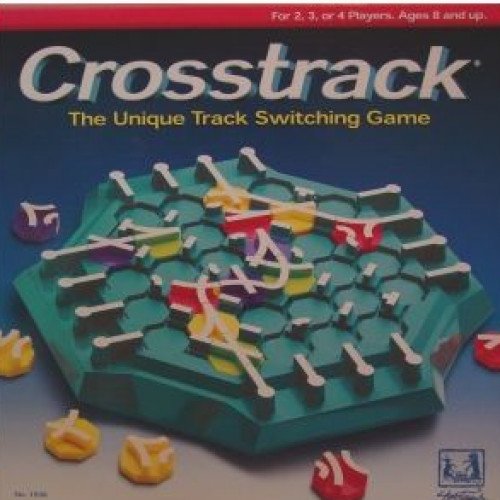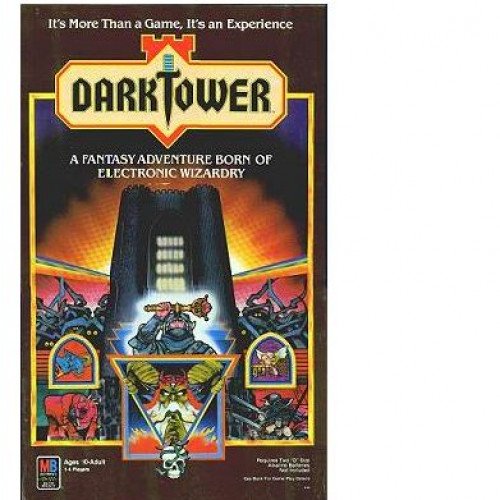"CROSSTRACK" vs "DARK TOWER"

CROSSTRACK
Crosstrack, the "unique track switching game", is an abstract strategy game created by Shoptaugh Games in 1994. Players place special track pieces onto an irregular octagon board, winning by being the first to create an unbroken path between two opposite sides. It is an example of a connection game. Play begins with an empty board, and players choose certain color groups as their individual "stocks". To win, a player must connect any two opposite sides of the board in an unbroken path, regardless of whose pieces the path goes through. In a three player game, each player chooses one color (six shapes) to form their stock, and the last color is set aside as a common stock. Any player may play from the common stock on their turn, and rotate or move common pieces on the board. However, after a common piece is acted upon in one of these three manners, it cannot be moved or relocated on the next two turns. In other words, if player A rotates a common piece on the board, neither player B nor C will be able to move or rotate it on their immediately subsequent turns. However, once play returns to A, any player is free to rotate or relocate the piece again– unless, of course, A chooses to move or rotate the piece again.
Statistics for this Xoptio

DARK TOWER
Dark Tower is a 1981 electronic board game by Milton Bradley Company, for one to four players. The object of the game is to amass an army, collect the three keys to the Tower, and defeat the evil within. The game came out during the height of the role-playing game craze in the early 1980s. Advertising for the game included a television commercial featuring Orson Welles. A sequel, Return to Dark Tower, is being developed by Restoration Games and is set to be released in July 2021. The game consists of a battery-powered center unit (the Dark Tower), a circular cardboard game board divided into four interlocking quarters (with a hole in the middle for the Tower), four cardboard tokens, several plastic flags, playing pieces, and locations which are placed in holes in the board. In addition, there are several peg boards (with red Battleship-type pegs) used to keep track of a player's number of troops, gold and food. The Tower itself consists of a small membrane keyboard beneath a "display" (a piece of tinted plastic). Behind the display cover is a carousel containing a number of film cels, which, when backlit by one of three lights mounted underneath, display the appropriate picture on the display cover. The display cover also conceals a digital LED display for representing numbers up to 99. As the Tower rotates and illuminates the appropriate cells during gameplay, it also emits sounds for the events represented by each cell. To play, each player takes turns rotating the Tower to face them and then moving about the board. The quarter of the board in front of a particular player is their territory. Gameplay proceeds by moving a player's token one space and then pressing a button on the Tower that corresponds to the type of space (e.g., Sanctuary, Tomb, Bazaar, Frontier). The Tower then resolves what happens to the player by showing the player the appropriate cel and reporting whatever occurs. For instance, if the Tower decides that the player has encountered Brigands, it will turn to the Brigands cel, simultaneously displaying the number of brigands encountered. If the player chooses to fight, the Tower resolves the battle by alternately counting off the remaining numbers of friendly troops and Brigands. Once all events have resolved, the Tower is rotated to the next player and their turn begins.